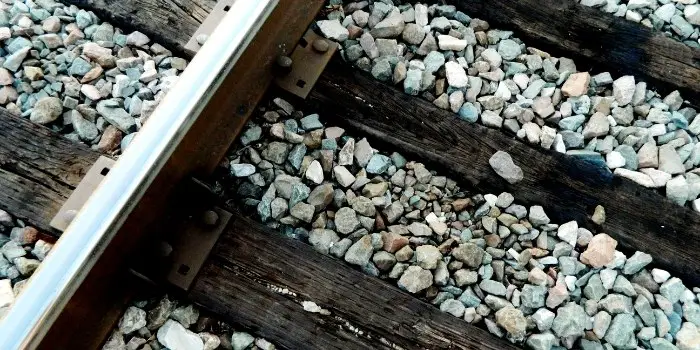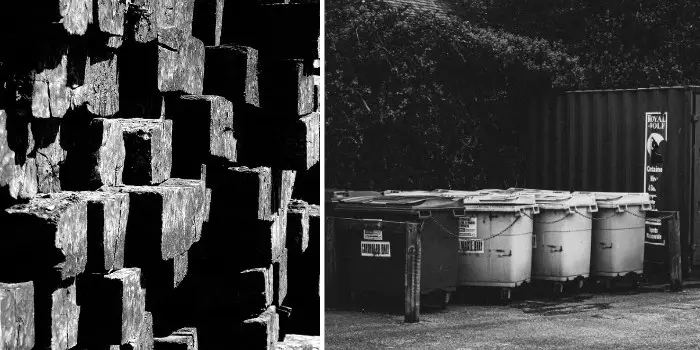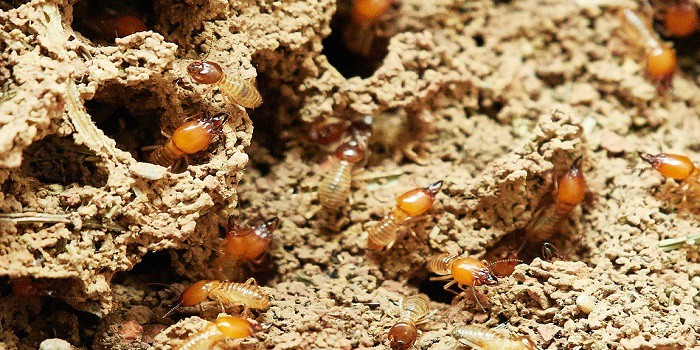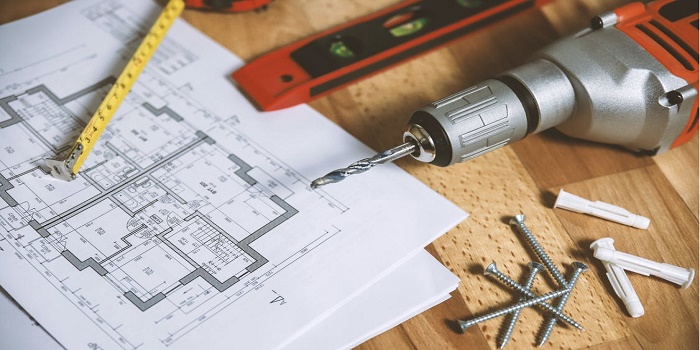
Railroad ties are a material that is mostly made of creosote-treated wood.
Some of the elements of creosote will dissolve in water, though others will seep through the soil into the groundwater.
Some elements that are not water-soluble will stay right in place, forming a tar-like mass.
Once it is in the groundwater, it can take several years before the creosote can completely break down, so it can build up in plants and on animals. It is also believed to be carcinogenic to humans.
Disposing of Railroad Ties
The way to get rid of railroad ties is similar to the process of throwing out any other kind of solid waste.
Even so, before getting rid of them with other solid waste, it is important to check with the local agencies and make sure you are disposing of the materials in accordance with the law.
Some places do not allow disposing of materials that have any toxic chemicals like creosote. It is important to get familiar with the rules before you proceed.
Below are the two methods you can use to get rid of railroad ties:
1. Dispose of them in a landfill
The safest method to throw out leftover railroad ties is to throw them out in a landfill. Most states have regulated landfills that accept these railroad ties.
You’ll need to first get in contact with the local landfill and ask if they accept these materials.
The decision for a landfill to accept or deny a railroad tie is dependent on any decisions made by the solid waste management department or the waste management authority of the state.
If the landfill does accept railroad ties, it’s important to clearly label them and then dispose of them separately from the other trash you are dumping.
Furthermore, if the railroad ties have been treated with any kind of toxic chemical, you will need to alert the landfill workers and tell them.
Don’t drop off treated railroad ties without letting them know beforehand and getting express permission.
You must also make sure that you remove any adhesive linings, screws, nails, and other materials from the railroad ties before you transport them to the landfill.
Be extra careful when removing such things from railroad ties, and mind the size of the railroad ties themselves.
The ties cannot be more than eight feet long if you intend to toss them into a landfill.
2. Burn the old railroad ties safely
Burning railroad ties in certain residential areas are only an option if the railroad ties are untreated and are made only of wood.
You can burn any railroad ties that are UNTREATED as a source of fuel, just like you would any other kind of wood.
That said, for any TREATED railroad ties, you have to follow the Federal Air Pollution Control guidelines.
These guidelines permit the combustion of railroad ties in certain high-temperature combustion chambers like a power plant, kiln, or boiler.
Such high heat effectively burns off any hazardous materials contained in the railroad ties, including creosote.
Be sure to remove any non-wood elements like screws, nails, and other metal pieces from the railroad ties before you burn them, regardless of whether they are untreated or treated.
Be careful when you complete this process.
3. Reuse old railroad ties cautiously
Usually, simply disposing of the railroad ties isn’t the best option. This is especially true when the materials can be recycled and reused.
The Environmental Protection Agency encourages you to reuse materials whenever it is possible, and one of the materials they recommend reusing is railroad ties.
Below, you’ll find a few ways that you can reuse railroad ties instead of adding them to the local landfill:
a) Burn railroad ties as a biomass source of fuel
There are various incineration plants found throughout the United States that use railroad ties as biomass material.
Because of this, railroad ties can be burned at a biomass power facility and therefore transformed into fuel.
This fuel material can be shipped to various regions across the nation and even internationally.
If you have a lot of railroad ties and aren’t sure what to do with them, you can take them to a power plant that uses biomass to make fuel.
If you aren’t familiar with any such facilities local to you, you can ask for help from landfill authorities and your local waste collection agency to point you in the right direction.
b) Use railroad ties in business or home landscaping projects
Another option is to use railroad ties in any commercial or domestic landscaping projects you have upcoming.
They are effective for a number of creative applications, including lining plant beds, driveways, walkways, and fences.
They are also able to be used to retain walls and as landscape timbers. By using railroad ties this way, you can make sure they don’t end up clogging landfills or burning wastefully.

Are Railroad Ties Flammable?
Yes, railroad ties are flammable due to the creosote that is used to treat them.
Creosote is an oily, black substance that is extremely flammable and can make a fire more difficult to put out.
Also, remember, because of the dangers posed by the creosote that is used to treat them, it is not safe to use railroad ties in a garden.
Additionally, as the wood slowly breaks down, it will release this toxic brew into your soil, contaminating it and your food.
How Not to Dispose of Railroad Ties?
Ideally, you should never burn creosote-treated railroad ties.
Combusting them risks the release of toxic chemicals and gasses through their smoke, which can cause various health hazards.
The ash from burned, treated railroad ties that have creosote in them will also be quite toxic and potentially harmful to your health.
Moreover, if you want to cut treated railroad ties using a power tool, it is best to wear a mask and goggles.
This will prevent you from breathing in the toxic sawdust or getting it in your eyes. If not, you could cause respiratory issues, like difficulty breathing.
Safety Guidelines for Homeowners
Though creosote is not often used to treat wood in residential settings, you will commonly see it in railroad ties that are used in landscaping in domestic areas.
For this reason, the Environmental Protection Agency has output certain guidelines for homeowners who are dealing with creosote-treated railroad ties near their surroundings.
The guidelines recommend that homeowners:
- Avoid contact with the skin and wash any clothing that comes in contact with creosote-treated wood separately from other clothing in the house.
- Don’t burn the treated wood in fireplaces, open fires, residential boilers, or stoves since the ashes and smoke might put out toxic materials.
- Wear goggles to protect your eyes when sawing wood, especially treated wood.
- Wear a long-sleeved shirt, long pants, and durable chemical-resistant gloves to protect your skin.
In the United States, millions of railroad ties are taken out of facilities each year.
Most of these used railroad ties that tend to average 30 years of age are burned to generate heat and power.
Some also end up in landfills, and any remaining railroad ties that still have the potential for use are usually converted into landscape timbers and then used in landscaping projects.
That said, the low cost of natural gas, as well as the guidelines surrounding reusing or burning chemically treated ties, has increased the number of railroad ties in landfills.
In 2017, Nisus Corp., a wood preservative company, worked for hand in hand with a group of Tennessee-based researchers to create a thermochemical process on a commercial scale.
This process worked to drive up the value of railroad ties while also reducing their effect on the environment when disposed of.
The process involves chopping up the railroad ties and heating the remaining material to pull harmful chemicals like creosote from it. The cleaned-up wood can then be burned for fuel or used to make environmentally-friendly railroad ties.
Final Thoughts
If you find yourself with old railroad ties, you need to get rid of them; you can do so in a few ways.
However, because of the regulations concerning railroad ties, it is important to get familiar with the laws and dispose of them safely and legally.

Hi, I am Mark Garner a professional carpenter, woodworker, and DIY painter. I live in the small city of Peoria, Arizona as a semi-retired woodworker. I have started this blog with a simple motive to help you with my wood experience in this sector. If you like to know more about what I love doing and how it all got started, you can check more about me here.




